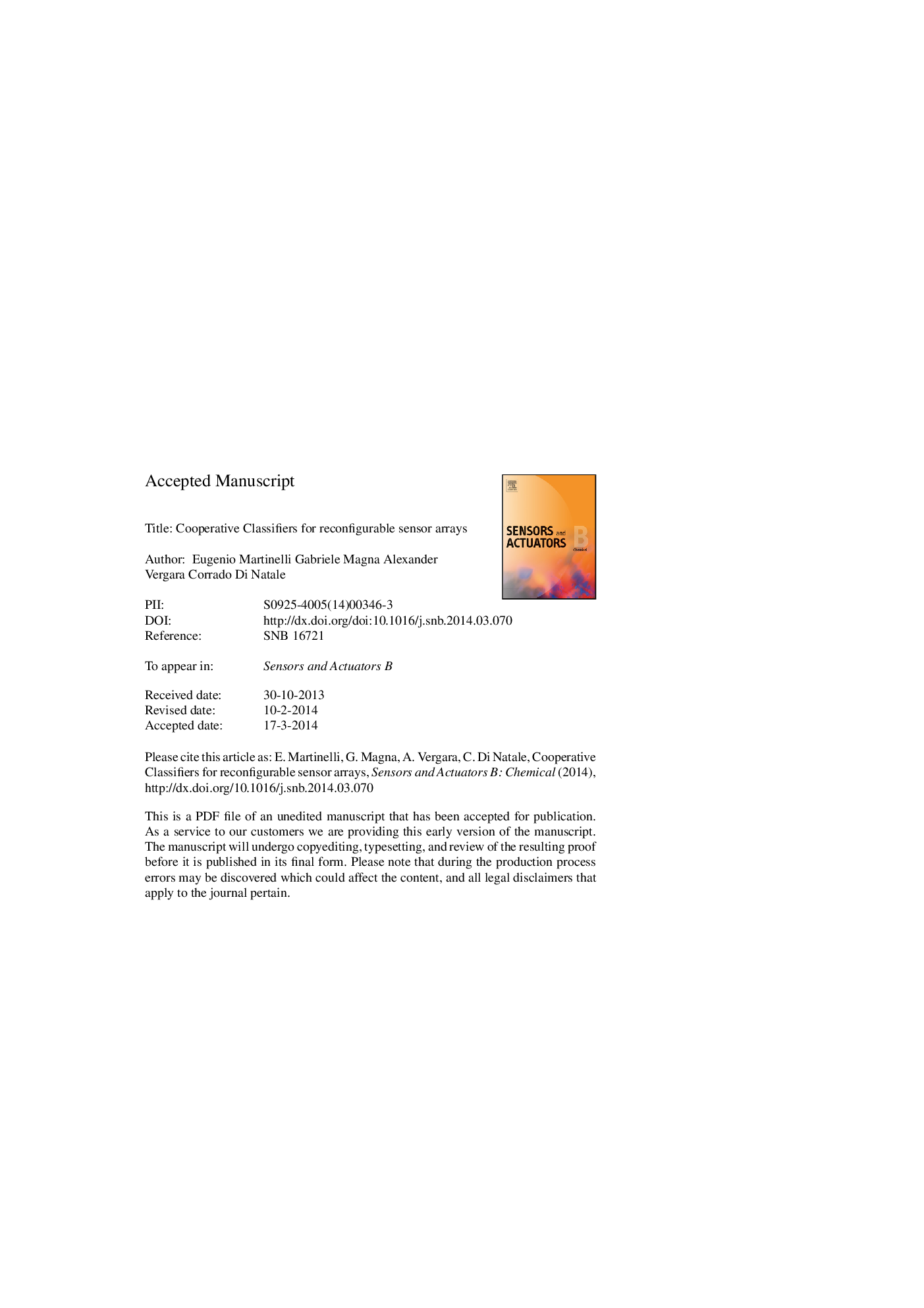| Article ID | Journal | Published Year | Pages | File Type |
|---|---|---|---|---|
| 7147011 | Sensors and Actuators B: Chemical | 2014 | 39 Pages |
Abstract
Sensor failures are manifested by a series of events ranging from modest signal drift to severe malfunctioning leading to the eventual replacement of the sensor. This procedure straightforwardly restores the original conditions of the array, but the non-reproducibility among the same kind of sensors as well as their deterioration (drift) during the lifetime may require frequent re-calibrations. In this paper we elaborate the concept that sensor arrays may be rather unsensitive to single elements' failures, and for the scope a data processing architecture based on a set of sub-classifiers one for each sensor is introduced. The global class assignment is obtained through a weighted majority voting decision rule and the model has been here validated with both artificial and real gas sensor array datasets related to a study case where a fixed number and kind of classes are randomly presented to the sensors. In both cases, some of the sensors were suffering from drift whose magnitude is large enough to deceive multicomponent classifiers, such as KNN. Artificial sensor fault events were also induced in the array to evaluate the fault-tolerance property of the model. Results indicate that both for artificial and real datasets the classification rate achieved by the model largely outperformed that of KNN.
Related Topics
Physical Sciences and Engineering
Chemistry
Analytical Chemistry
Authors
Eugenio Martinelli, Gabriele Magna, Alexander Vergara, Corrado Di Natale,
